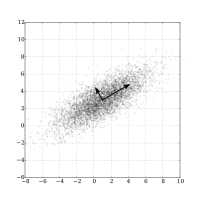
Photo from wikipedia
In epidemiology, left-truncated data may bias exposure effect estimates. We analyzed the bias induced by left truncation in estimating breast cancer risk associated with exposure to airborne dioxins. Simulations were… Click to show full abstract
In epidemiology, left-truncated data may bias exposure effect estimates. We analyzed the bias induced by left truncation in estimating breast cancer risk associated with exposure to airborne dioxins. Simulations were run with exposure estimates from a Geographic Information System (GIS)-based metric and considered two hypotheses for historical exposure, three scenarios for intra-individual correlation of annual exposures, and three exposure-effect models. For each correlation/model combination, 500 nested matched case–control studies were simulated and data fitted using a conditional logistic regression model. Bias magnitude was assessed by estimated odds-ratios (ORs) versus theoretical relative risks (TRRs) comparisons. With strong intra-individual correlation and continuous exposure, left truncation overestimated the Beta parameter associated with cumulative dioxin exposure. Versus a theoretical Beta of 4.17, the estimated mean Beta (5%; 95%) was 73.2 (67.7; 78.8) with left-truncated exposure and 4.37 (4.05; 4.66) with lifetime exposure. With exposure categorized in quintiles, the TRR was 2.0, the estimated ORQ5 vs. Q1 2.19 (2.04; 2.33) with truncated exposure versus 2.17 (2.02; 2.32) with lifetime exposure. However, the difference in exposure between Q5 and Q1 was 18× smaller with truncated data, indicating an important overestimation of the dose effect. No intra-individual correlation resulted in effect dilution and statistical power loss. Left truncation induced substantial bias in estimating breast cancer risk associated with exposure with continuous and categorical models. With strong intra-individual exposure correlation, both models detected associations, but categorical models provided better estimates of effect trends. This calls for careful consideration of left truncation-induced bias in interpreting environmental epidemiological data.
Journal Title: European Journal of Epidemiology
Year Published: 2021
Link to full text (if available)
Share on Social Media: Sign Up to like & get
recommendations!